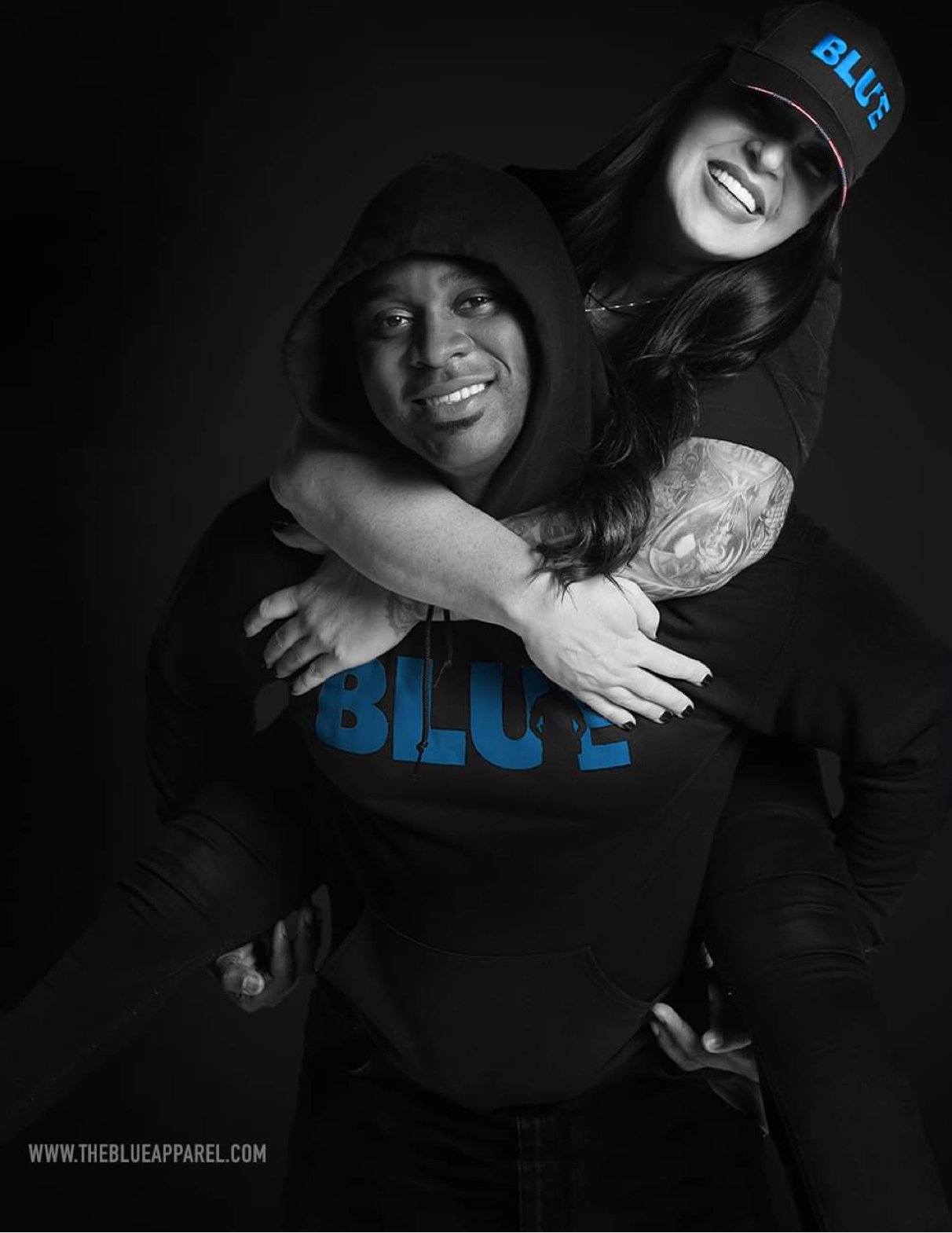Bravery is always on Duty - Jacob Albarado, Uvalde School Shooting
/Bravery is always on Duty
Jacob Albarado
Uvalde School Shooting
By Marco Catania & Daniel Del Valle for Blue Magazine and Moment of Silence
What would you do?
Jacob Albarado, a Uvalde Texas resident, Federal Border Patrol agent and a dedicated husband and father to his children ages 19, 13 and 8, could have never anticipated what was about to happen in the early afternoon hours on May 24, 2022.
Jacob Albarado was in his barber’s chair when both men got text messages about the shooting unfolding at Robb Elementary School in Uvalde, Texas. “There’s an active shooter. Help. Love you,” Albarado’s wife Trisha said in three messages at 11:41 a.m. She’s a fourth-grade teacher at the school where their daughter is a student.
Here is his story…
The BLUE Magazine: What was it like growing up in Uvalde?
Jacob Albarado: It’s a small town. Everyone knows everyone. If you don’t know who they are, you’ll find out within minutes. So, I like being in the small town where I know everyone.
What motivated you to get involved in law enforcement?
Well, I’ll tell you the truth. I didn’t want to at one point in time, because I didn’t want to stop people from coming over here trying to make a living for themselves. But then one of my buddies was an agent, and he told me that I could be one of the guys making sure that they’re getting treated right in the process. So that’s kind of what pushed me to be that guy, helping them, helping them out as they were coming through, making sure they were treated right.
So tell me about May 24th. There was an active shooter incident at the Robb Elementary School. Let’s go to that day. Tell me what happened that morning. You woke up and what happened?
There was an award ceremony for my daughter. So, I woke up and got the kids ready for school, got myself ready because I knew that I had to go to the award ceremony. I was there by 8:30, I believe. I was there from 8:30 to 9:00 for the award ceremony. My daughter got all A’s for the year and then I was off in town running errands, washing my car and taking my mom for breakfast. And then I was on my way to get a haircut.
OK. So you went to get a haircut, right. And, you know, according to some of the timelines that are available, it was approximately 11:28 when the shooter arrived at Robb Elementary School and apparently, shot at three witnesses who were at the funeral home across the street from Robb Elementary School. You mentioned that you and the barber heard gunshots. These may have been the gunshots that you may have heard.
As I was arriving at the barbershop, my barber was walking across the parking lot. He was com-ing from getting lunch. And we entered the barber shop and he said, did you hear that? And I said, I think I heard some shots. And then we just carried on. I sat down in the barber seat and then I got a text and then he got a text. And then my wife was texting me that there was an ac-tive shooter. “Help me. I love you,” she said.
You heard the gunshots and now you get a text to validate it and are you thinking?
Oh, I didn’t think it would ever happen. I felt naked because I didn’t have my pistol on me. I nor-mally had a pistol on me. So I knew my barber had a history of being armed. So, I asked him if he had a gun on him. He said yes. So, we took off as fast as we could and got to the school.
When you decided to run to the school with your friend, the barber, what was it like at that scene? What did you see? What did you hear? Was law enforcement already there?
There was some law enforcement there. The scene wasn’t kicked off yet. There was, I guess, the locals that live in the area and they were coming to the school trying to see what was going on. They’re filming; everyone’s a part of the media now with their phones. They were trying to record the incident as well. And I was just trying to get in there as fast as I could, trying to find out where my wife was at, trying to find out where my daughter was and trying to help whoever I could at the time.
What happened when you arrived at the door? Did you immediately go in or did you assess the situation?
I assessed the situation. I was off duty. I didn’t have my ballistics. I didn’t have a long arm. I knew he had a high-powered rifle. He had fired multiple shots. There were officers there with their vests.
And were you communicating with your wife or anybody?
I was trying to communicate with her. When stuff is chaotic like this, all the phone lines were tied up. I can’t remember if she texted me or called me that she was already across the street at the funeral home. So I felt some relief at that point in time. Now, I’m looking for my daughter.
You’re making this decision to put yourself in real peril, obviously, to save your daughter and anyone else that you could. What went through your mind when you entered the school? Did you feel that you were going to die?
I didn’t know if I was going to. I was willing to get shot. I was willing to do what I had to do to help my daughter get out of there alive. I wasn’t going to go home without her and my wife.
So, when you entered the school…
Well, just to clarify that I didn’t immediately enter the school. I was fixing to go into the school. The school is kind of situated where you got one new building. When you go into the school in the classes you enter into like a little hallway. And that’s where the shooter was at. After I did go in there, I went across and ran into the other wing where my daughter was at, and then I started clearing out the classrooms over there.
Did you know where the shooter was?
I didn’t know exactly where he was at. He was in that hallway. He was in the class. But this is all stuff that we learned. And I know I didn’t know exactly where he was at at the time. I was in my dress clothes with the shotgun. It’s not very, very accurate. I had a vest on. A guy came in, he said, hey, that’s my vest. I said, OK, here’s your vest, here’s your vest. And that was it. And then from there, I ran behind the vehicle. I talked to Reuben Reece, his wife was shot and bleeding inside, talked to him. He was losing it. I went to school with him, played baseball with him.
At that point, were you panicking knowing that your daughter was in the school by herself?
She was at school by herself. It’s right around lunchtime. So that’s when they start moving all around. So, I didn’t know exactly. She could have been at lunch. She could have been at PE. She could have been in a classroom. I didn’t know where she was at the time.
At some point, you made your way to a different part of the school because you realized that perhaps your daughter may have been on that side of the school?
My wife finally texted me back saying that my daughter was in the restroom. I didn’t know what restroom she was in, so I was still trying to find out where she was. And I didn’t know that there were restrooms inside the classrooms. So she was inside the restroom, inside her classroom.
As a father, your mind must be going 100 miles an hour. I can’t imagine what that felt like. So, as you’re going to the other part of the school, who was Reuben Reece?
He’s a school police officer there in town. I went to school with him, played baseball with him. And as I was leaving that part of the building, he was there by one of the police vehicles. I spoke with him to see how he's doing or see what he knew because I had no communication with any other law enforcement just to see where the shooter was at.
You went to the different part of the school. Is that where you entered the school?
Well, on that part of the school, the doors exit to the outside, to the older part of the school. There was two officers there and I was asking them where the kids were in the school. And he said they were all in the classroom. And at that point, I told them that we needed to get the kids out of the classroom to get them to safety.
So at that point, your law enforcement training, your instincts, just to help and save people kicked in, would you say that?
Yes. I like taking charge of the situation. I wanted to make sure my daughter was safe out of any harm's way. So, I started clearing out all the classes.
When you entered the school and you saw two other officers there, what went through your mind?
I didn't know where the shooter was. I didn't know if he was stationed there. I didn't know if he was going to be moving around shooting, so I just tried to get all the kids to safety.
So you actually asked the officers to cover you basically or cover the hallway?
I made a little makeshift team. I got two officers, with me downrange to where they thought the shooter was at. I had another two officers opening the doors and sending the kids my way. And then I had another officer on the sidewalk toward the parking lot.
So, as you're clearing naturally one of your primary motivations is to find your daughter in addi-tion to saving all these other children as well. How did you find your daughter?
I cleared out the wing where she goes to school. Her classroom started off with the first room, cleared them out. Second classroom. Got all the kids out. Third classroom, my daughter's classroom. I cleared that room out. I see her come out happy as can be. She knows I'm there for her.
Wow. So… when she saw you….
I gave her a hug. I told her to be brave and to keep on moving. Go to safety and that I’ll take care of this.
You let her run out with the rest of the children and you continued.
Yes. I continued to get the next two classrooms out. Then I went to the next wing, started doing the same thing.
Now, you also mentioned that some kids went out the windows as well. Were you just like using any means necessary to get the kids out?
Well, other officers were there. They were breaking the windows and having the kids come out. And I was just guiding the kids.
How many kids do you think that you managed to evacuate from the school, you and the other officers on the team that you assembled?
It's hard to say. I would have to guess there are normally about 20 kids per classroom. That day was award ceremony, so I'd say about half the kids had left. So, if you do the math on that, it's about 10 classrooms at about 10 to 15 kids per classroom. So, 100, 150 kids, maybe more.
How long would you say that you stayed on the scene?
Really until they took out the shooter and I found out that he was no longer a threat.
There's been a lot a lot of things said, especially on the national spotlight in terms of the police response and how they handled it. You were on the scene. You're a law enforcement officer. Many have said that there was a systematic failure. How do you feel about this?
I can't speak on what they were thinking. I just know that I was there trying to do the best that I could. And it's hard when shots are being fired. Shots are being fired at you. Your life is at stake. Everyone talks about training. But when you're training, people are not trying to kill you, so it kind of changes when you're actually in a scenario like that.
We train, right, repetition and practice. And, we hope that that repetition of practice when adrenaline kicks in, in an active shooter situation, that we resort back to that.
How much of your training do you think helped you?
I think it helped. But it's either in you or it's not. I like to believe whether I was law enforcement or not, I still would have done the same thing regardless. And I believe I probably would have, and people that really know me, they know my family knows I would have done the same thing regardless.
How do you feel this has impacted you?
It's like I told my told my wife and my kids, they're not going back to school until there's changes and ‘til I know that they're safe.
So you have safety concerns?
Oh yes, I know this happened and a lot of changes are going to be made. But it sucks that this had to happen for changes to be made.
What about for yourself in terms of changes? You weren't carrying your weapon that day. Did that change your perception and now carry all the time?
Yes, yes, yes.
You have to deal with a lot of the grief and the trauma. How are you handling that with your daughter and your wife? And I'm sure they both have losses.
Yes. My wife is having the hardest time. She lost two of her best friends, so she's having a real tough time.
And your daughter as well?
She's eight years old. I don't know if she understands everything that happened. She's actually doing well.
What do you feel when you hear the name of the active shooter of the incident?
Oh, why lie and say I don't feel any anger because I do. I wish he was just taking his own life or I wish he would gotten help somewhere along the line. Something in his life happened to make him do this. What it is, I have no idea. Why take all these innocent lives?
So being that Uvalde is a small community and people know each other, did you know of him or his parents or his family?
Well, just from what I found out, I don't know if it's true. I found out that he was, that his mother was on drugs and his grandma he was living with. He shot her in the face or had shot her right before all this happened. And my mom knew his grandmother. So, I mean, just within minutes of finding out who he was I found out a little more about him.
After you found out who he was and the dynamics of his family, you know? Did you think like that he was, like, emotionally disturbed or he fit the profile of someone that could do something like this?
Yes.
Did he have that kind of a background?
On social media, there should have been some red flags. There were some red flags there.
So between May 16th and May 18th, less than a week before this incident, this kid is 18 years old. And he went out and purchased a Daniel Defense AR-15 rifle. The next day he goes and buys a Smith and Wesson style AR-15 rifle. He bought over 2,000 rounds of ammunition. I mean, this kid spent $4,896 on two guns and ammo. How does that make you feel?
I don't believe it's a gun. I believe it's his intent. He could have done this with anything. He could have stolen the rifle from his neighbor, so I don't actually believe it's the AR-15. I don't believe its ammunition. I believe it's his intent. He wanted to go out and hurt people. So he could have done that any way that he wanted to.
So many times in law enforcement, we have the tendency to put the job before family. What would you tell an officer having gone through what you went through?
Give 100% at work, but your family comes first. It took me a while to find that switch. I used to put my work before my family. And then I found that I realized that my family comes first. I'm not going to get those memories back.
Here at The Blue Magazine, and Moment of Silence we have a law enforcement following. If there happens to be, let's just say, a law enforcement officer out there that's thinking about suicide. What would you say to that person?
Find a purpose in life. Find a purpose. Find a reason to be here. Reach out to someone. Speak to someone. Speak to a friend or family member.













































